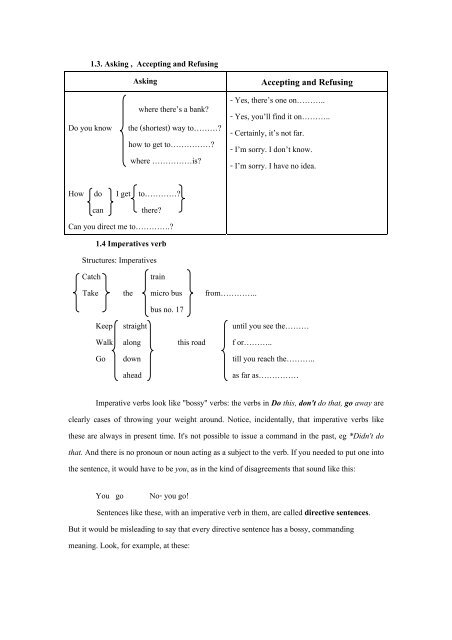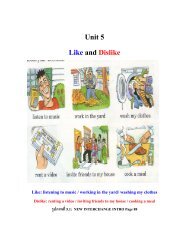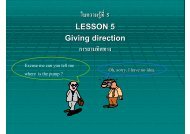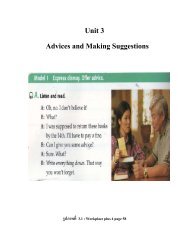Unit 9 Giving Direction
Unit 9 Giving Direction
Unit 9 Giving Direction
You also want an ePaper? Increase the reach of your titles
YUMPU automatically turns print PDFs into web optimized ePapers that Google loves.
1.3. Asking , Accepting and RefusingAskingDo you knowwhere there’s a bank?the (shortest) way to………?how to get to……………?where ……………is?Accepting and Refusing- Yes, there’s one on………..- Yes, you’ll find it on………..- Certainly, it’s not far.- I’m sorry. I don’t know.- I’m sorry. I have no idea.How do I get to…………?can there?Can you direct me to………….?1.4 Imperatives verbStructures: ImperativesCatchtrainTake the micro bus from…………..bus no. 17Keep straight until you see the………Walk along this road f or………..Go down till you reach the………..aheadas far as……………Imperative verbs look like "bossy" verbs: the verbs in Do this, don't do that, go away areclearly cases of throwing your weight around. Notice, incidentally, that imperative verbs likethese are always in present time. It's not possible to issue a command in the past, eg *Didn't dothat. And there is no pronoun or noun acting as a subject to the verb. If you needed to put one intothe sentence, it would have to be you, as in the kind of disagreements that sound like this:You go No- you go!Sentences like these, with an imperative verb in them, are called directive sentences.But it would be misleading to say that every directive sentence has a bossy, commandingmeaning. Look, for example, at these:









